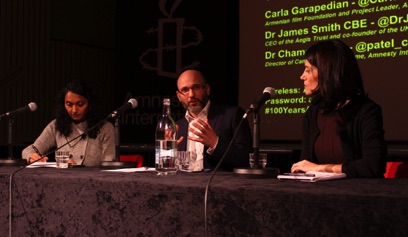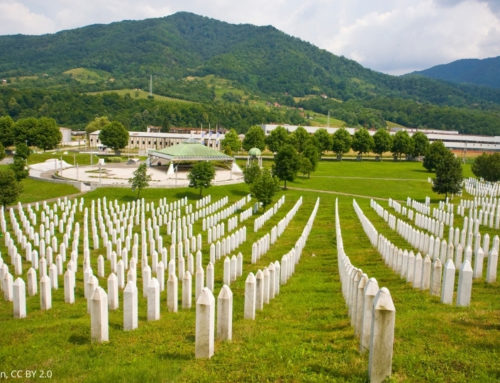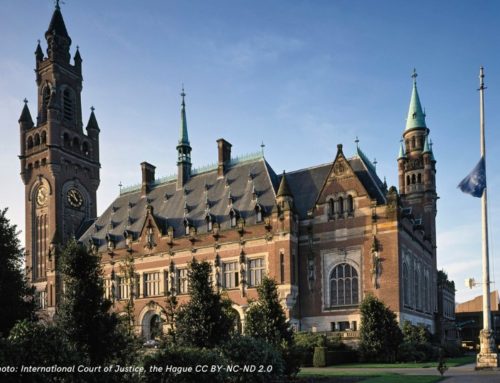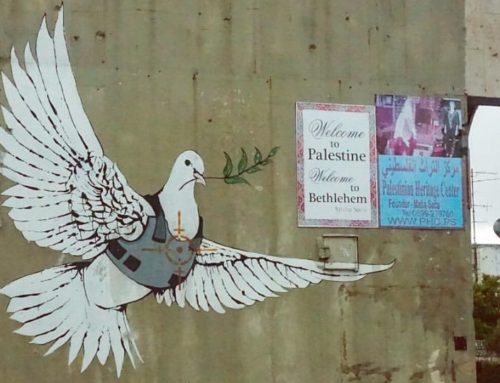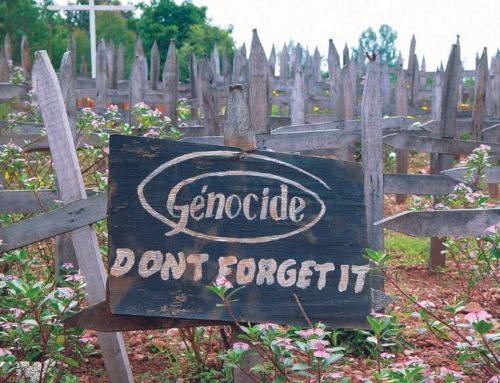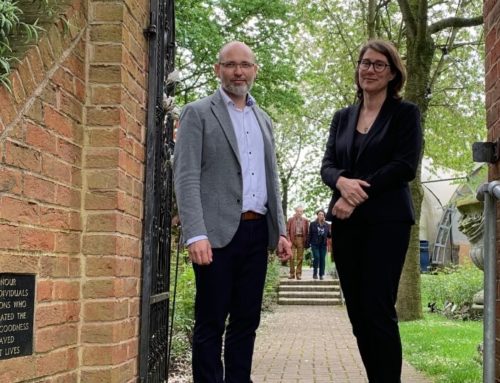Comment from Aegis CEO, Dr James Smith
Causing something of a stir in Istanbul, a growing number of governments and figures, including Pope Francis this week, have recognised that the catastrophe 100 years ago in which up to 1.5million Armenians perished, was genocide. Not so the United Nations, many other governments and media organisations who prefer to use the phrase ‘mass killing’ in relation to the Armenian tragedy.
It is worth taking note why the German acknowledgment yesterday of the Armenian genocide is so significant and can inform our understanding of a bigger historical and political picture. First, Germany has as much to lose in its relationship with Turkey as any other nation, both economically and from the security arrangements that Europe collectively seeks from the emerging powerhouse. Secondly, Germany knows more than most about the details of atrocities that occurred during the First World War in the Ottoman Empire. Thirdly, soul searching and political integrity are required in abundance for a head of state to be as honest as Joachim Gauck.
In speaking about Germany bearing some complicity in the Armenian genocide, the German President identified threads that run from atrocities against the Herero in colonial German South West Africa in 1904, through the Armenian genocide a decade later, to the Holocaust in Europe.
While the bold statement of Gauck was specific to Germany and the Ottoman Empire, the competing legacies from this era are the concern for all governments: International law developed as a response, to prevent and punish such crimes. Yet an equally strong pattern of impunity has persisted that provides encouragement to political leaders inclined to kill civilians.
Who Remembers the Armenians? 100 Years of Impunity
Speech by Dr James Smith
at Amnesty International’s London HQ, 22 April 2015
It’s a beautiful day in Munich in the late spring of 1921. Two friends in their mid 30s, a newspaper owner and an aspiring politician, are discussing recent events and their plans for the next few days. Both are about to make the long train journey to Berlin.
The newspaper owner is former diplomat Max von Scheubner-Richter. As Germany’s Vice-Consul in Erzerum, Turkey, in 1915 he witnessed the deportation of the Armenians, repeatedly using his position to try to alleviate their suffering. Late that year, in the last of 15 lengthy reports on the crisis to his superiors, he stated that “except for a few hundred thousand survivors, the Armenians of Turkey, for all practical purposes, have been exterminated.”
It is precisely because of these experiences that Scheubner-Richter is about to catch the Berlin train. He has been called as a defence witness in the trial of Armenian survivor, Soghomon Tehlirian.
Tehlirian, who lost 85 members of his family, is on trial for the murder of Talaat Pasha, one of the architects of the Armenian genocide – though the crime does not yet have that name. Capturing wide media attention, the trial is making waves in Berlin, where the Government has little desire to see an extensive airing of Germany’s complicity in Ottoman mass murder of Armenians and other, mostly Christian groups.
Under the terms of the 1914 military alliance between Germany and Turkey, German officers had operational command of the Ottoman army. 7 or 800 German officers and around 12,000 German troops were embedded with their Turkish allies – among them, troops from units such as the 21st Regiment of Dragoons, which a decade earlier had been involved in wiping out the Hereros in German Southwest Africa, now Namibia – a genocide which involved driving large numbers of people into the desert to die of thirst and starvation.
Among the German troops were men who would later go on to achieve notoriety in the Holocaust. These included a teenage Rudolf Hoess, son of a 21st Dragoon veteran. 25 years later Hoess would be appointed commandant of the death camp Auschwitz. Wilhelm Hintersatz, advisor to Enver Pasha, another leader of the genocide. Hintersatz would convert to Islam, work with the Grand Mufti of Jerusalem and command Muslim troops in the Waffen SS.
German officers signed deportation orders of Armenians and German engineers used Armenians as slave labourers to construct part of the Berlin-Baghdad railway. While the destruction of the Armenians could not take place without the acquiescence of Germany’s leadership, a number of German diplomats were outspoken in their opposition. “We should stop with our loathsome praises of the Turks,” Ambassador Metternich wrote to his superiors in Berlin. “Whatever they are accomplishing is due … to our officers, our cannons, our money.” Metternich, like Scheubner-Richter, was ignored.
Scheubner-Richter’s friend is heading to the train station for a very different reason; to cultivate the financial backing in Berlin that will one day help him to emulate Talaat Pasha on an even larger scale. His name: Adolf Hitler.
Around the same time, a thousand kilometres to their east, Raphael Lemkin, a 20-year-old linguistics student at the University of Lvov, is also reading the papers and discussing the Tehlirian murder trial with his professor. Why could the Armenians not have had Talaat Pasha arrested for the massacres, he wanted to know. As Samantha Power describes in her book ‘A Problem from Hell’ the professor explained that there was no law under which Talaat could be prosecuted:
“Consider the case of a farmer who owns a flock of chickens,” he said. “He kills them and this is his business. If you interfere, you are trespassing.”
“It is a crime for Tehlirian to kill a man, but it is not a crime for his oppressor to kill more than a million men?”, Lemkin asked. “This is most inconsistent … Sovereignty cannot be conceived as the right to kill millions of innocent people.”
And so it was that both Raphael Lemkin and Adolf Hitler learned about the impunity of people who commit mass murder. How they were to use that knowledge was vastly different.
Here in London, the persecution of the Armenians was denounced at high levels in the summer of 1915. The Earl of Crewe, Leader of the House of Lords, noted “wholesale massacre” had been “carried out under the guise of enforced evacuation.” The presence and influence of the Germans, Lord Crewe stated, had been “an absolute and unmitigated curse both to the Christian and Moslem population.” He regretted it was impossible to take immediate steps for the suppression of such atrocities, but said that those responsible would ultimately receive just punishment.
However, attempts to hold perpetrators to account proved limited and unsuccessful – failing in part for lack of any international legal framework for the prosecution of such crimes.
In 1919, Turkish courts sentenced several Young Turk leaders to death in absentia, but dragged their heels on the cases of suspects actually in custody. In August 1920, the Treaty of Sevres forced the hand-over of dozens of suspects to the British. However, lacking commitment to an investigation still hampered by Turkish bureaucracy, on 16 March 1921 – just one day after Soghomon Tehlirian took justice into his own hands by shooting Talaat Pasha – the British signed a prisoner exchange agreement with Turkey, handing back 64 suspects in return for 22 Britons. Thereafter, there were no further trials.
This ultimate instance of impunity for Turkish perpetrators may have contributed to a sense within Germany that there would be little or no international response should similar violent measures be adopted in Central Europe against Jews, Roma and Slavs.
Impunity, however, did not begin in 1915. Massacres of Armenians had gone unpunished time and time again through the previous quarter-century. Up to 300,000 were killed in the mid 1890s, in a pattern of mass atrocities that bear some remarkable similarities to those currently ongoing in Darfur.
Countering Armenian agitation for promised reforms, in 1890-91, Abdul Hamid II armed Kurdish militias as proxies, encouraging them to attack Armenians and take their food stores and livestock. When some Armenians organised armed resistance, Hamid responded with a large-scale campaign of mass murder which earned him the nickname ‘the Red Sultan’. The atrocities petered out around 1897 under pressure from the international community, though no attempts were made to ensure accountability for these crimes. At the time Kaiser Wilhelm II proudly noted, “I am the only one who still sticks by the Sultan.”
There may be a number of reasons why one risk factor for genocide, as identified by political scientist Barbara Harff, is the occurrence of previous massacres of the group at risk. It is clear that a state of impunity for initial offences will not reduce the risk of further atrocities allowing perpetrators time to consider how they might execute more radical solutions for what they view as their troublesome ethnic or religious problem, should the opportunity or need arise.
While during the war and immediately after, Scheubner-Richter was outspoken against the killings of Armenians, by 1923, he was using the kind of language about Jews in his paper the ‘Aufbau-Korrespondenz’ that had previously been used by Turkish nationalists about Armenians in organs like the wartime weekly ‘Harb Mecmuasi’, where they were consistently accused of being ‘in league with the enemy.’
Claiming that “the international-Jewish plot of World domination” lurked behind the threat of communism, he wrote about ‘cleansing’ Germany saying, “We have to wage a merciless fight against all that is alien to the corporate entity of the German people – for the sake of the German nation and the Great German Reich.”
We may not know whether Hitler and Scheubner-Richter shared the same train journey that day between Munich and Berlin. However, we do know they were close during the birth of the Nazi movement and it is almost inconceivable that Scheubner-Richter did not convey his personal knowledge of the Armenian genocide to Hitler. During the Munich Putsch, on the 9th of November 1923, the bullet which narrowly missed Hitler killed Scheubner-Richter. Of the 16 Nazis killed, he was the only one, stated Hitler, who was irreplaceable.
What might Hitler have drawn from events in the Ottoman Empire? At his trial following the Putsch, he compared his actions with those of other revolutionaries, among them the perpetrators of the Armenian genocide. “Enver Pasha marched on Constantinople and established a new state there, and a new spirit poured over the totally infested capital city,” he stated.
We also know that Hitler intended to emulate the Young Turks. In 1931, now at the head of a party growing faster than UKIP, he gave a confidential interview to newspaper editor Richard Breiting about his future plans for Germany.
“Everywhere people are awaiting a new world order,” Hitler told Breiting. “We intend to introduce a great resettlement policy … Think of the biblical deportations and the massacres of the Middle Ages … and remember the extermination of the Armenians.”
Concerned that this 1931 interview could be too revealing about Nazi plans, in 1937 the Gestapo questioned Breiting – who lied that he had destroyed his interview notes. Soon after, he died in suspicious circumstances.
Clearly, Hitler had not forgotten about the Armenians. Neither had Lemkin. By the time Hitler gave his Breiting interview in 1931, the brilliant young linguist had become Deputy Public Prosecutor for the district court of Warsaw, and was using his legal training to work towards an international framework for responding to such mass atrocities.
Two years later, in August 1933, Lemkin was horrified to see atrocities occurring again, this time in northern Iraq. On a pretext of counter-insurgency, the Iraqi army – under the command of general Bakr Sidqi – slaughtered up to 3,000 Assyrian Christians in Simele and dozens of surrounding villages.
“Having disarmed
This was not the first time the Assyrians had been targeted. During the Armenian genocide, tens of thousands of Assyrian Christians were also killed by the Turks, with estimates for their death toll ranging between 100,000 and 300,000.
Despite initial outrage at the killings, in the end the British government stood by Iraq’s leadership and blocked international inquiry, apparently fearing that this could provoke renewed atrocities.
Acclaimed in Iraq as a national hero, Bakr Sidqi was promoted. Three years later, he would seize power in a military coup. And so a pattern of ethnic violence and impunity was being reinforced for the future.
In October 1933, with reports of the Simele massacre of the Christian Assyrians still fresh in his mind, Lemkin proposed a new law that would ban such atrocities, focussed on two linked practices – ‘barbarity’, which he identified as ‘the premeditated destruction of national, racial, religious and social collectivities’, and ‘Vandalism’: the ‘destruction of works of art and culture, being the expression of the particular genius of these collectivities’. Lemkin proposed this law in a paper for a major international legal conference in Madrid.
Lemkin’s 1933 proposal, a precursor to his definition of genocide, shows that he understood genocide as something more fundamental than solely the end-point of mass murder. He recognised that the destruction of art, culture and religious artefacts were part of a process to destroy a group of people and he argued therefore that attacks on culture closely identified with a specific group should be outlawed as a preventive measure, ultimately against that people’s physical destruction.
Noting that Lemkin drafted this law hastily in response to the massacre of Assyrian Christians in Iraq in 1933 and that eighty years after the British allowed a climate of impunity to flourish in Iraq after this massacre, it is beyond belief that today the same Assyrian Christians are under existential threat by so called Islamic State in northern Iraq. As we see Assyrian monuments being destroyed, as we have in recent weeks, Lemkin remind us that this is far more than an archaeological tragedy; it is a signal of the intent to destroy the people that those monuments symbolise.
Perhaps Lemkin was also the observing across the Polish border the growing grip on German Jewry and reflecting on how only months earlier books by Jewish authors – secular, religious and political books – were publicly burned in large fires in the streets of Berlin. These included works by Heinrich Heine, who wrote in 1821 that ‘where books are burned, in the end people too will be burned’. With almost equal prophetic foresight, Lemkin penned his observations in 1933 that such ‘vandalism’ as he called it is intricately linked the ‘barbarity’ of physical killing of groups. This was only five years before hundreds of synagogues burned on Kristallnacht, which scholars today agree was a watershed event leading to the destruction of the Jews of Europe.
Sadly, the World was not ready to listen Lemkin. As one delegate put it 1933, this crime of barbarity took place “too seldom to legislate.”
Six years after the draft law on barbarity was dismissed as unnecessary, on a hot summer’s day in Obersalzberg, Hitler is addressing his generals, just days before starting World War II through the invasion of Poland. At the back of the room, and though it’s not allowed, Head of Military Intelligence Wilhelm Canaris is taking notes.
“I have issued the command – and I’ll have anybody who utters but one word of criticism executed by a firing squad – that our war aim does not consist in reaching certain lines, but in the physical destruction of the enemy. Only thus shall we gain the living space we need,” Hitler states. “Who, after all, speaks to-day of the annihilation of the Armenians?”
For Lemkin, the one person in the World, it seems, to have responded to the Armenian tragedy by dedicating his life to outlaw mass murder, a dreadful irony was unfolding. He and his family faced the prospect of death on account of their identity as Polish Jews.
Lemkin understood the warning signs only too well. He knew it was safer to uproot, leave his home, job and community, and bear all the uncertainty of becoming a refugee.
He pleaded with his parents to leave Poland, but they would not. They could not understand why anyone would want to kill them. Lemkin realized that he would have to escape alone.
Poignantly conveyed in the 2014 documentary “Watchers of the Sky”, Lemkin later said of his last day with his family: “I tried to live a year in this one day, to borrow time from the future. It was like going to their funerals while they were still alive. The best of me was dying with the full cruelty of consciousness.”
Lemkin’s parents, and 47 other members of his family, were sent to Nazi concentration camps and killed.
If mass atrocities mattered to Lemkin before, it was personal now. He decided that a word was needed to define the crime; not to set limits to it, as has sadly occurred through international law, but as he put it, to establish “a bridge of sympathetic understanding.” And so in 1943, Lemkin coined the term – genocide. The killing of a people.
For Lemkin, the Nuremberg trials were bitterly disappointing. “The Allies,” he commented, “decided in Nuremberg a case against a past Hitler – but refused to envisage future Hitlers.”
If the Nazis had never crossed international borders, but had destroyed Germany’s Jewish population alone, they would not have had to answer the charges laid in Nuremberg. As a farmer can kill his own chickens, so national leaders retained the right to destroy a people in their own territory.
Turning his attention to the newly-formed United Nations, Lemkin lobbied tirelessly for the creation of a Genocide Convention to outlaw the crime. On paper, its unanimous adoption in 1948 was the accomplishment of his mission in life. Yet he quickly realized this was not the end of the fight against impunity, just the beginning.
In 1959 Lemkin died of a heart attack whilst waiting for a bus to take him to yet another meeting at the UN, trying to persuade countries to live up to their commitment to both punish and prevent genocide. Only weeks later the first massacres to rock Rwanda would claim 20,000 Tutsi lives.
“This convention,” he had said, “is like a ship carrying survivors. It cannot be allowed to sink.”
Genocidal violence, however, would be ignored again and again, building a legacy of impunity from which perpetrators could continue to draw courage. In 1963, Swiss Professor Denis-Gilles Vuillemin documented evidence of further massacres of thousands of Tutsis in Rwanda, filming some of the bodies and recording survivor testimony. He then resigned his teaching post in the National University Rwanda because, as he put it, “I find it inconsistent to teach in a country with a genocidal government.”
Facing international criticism, the Rwanda Government minimized the scale and justified the killings, as the Ottomans had before them, by saying the bodies were corpses of terrorists. The Rwandan Government would continue to use the excuse of counter-insurgency as cover for mass atrocities through to the genocide of the Tutsis in 1994.
New chapters are being written in the history of impunity for genocide today. The establishment of the international criminal court was a great step forward in the international legal framework to punish and prevent mass atrocities. In 2008 the court issued an arrest warrant for genocide by Sudan’s head of state, Omar Bashir, presiding today over military operations he argues are to combat rebellion, and which the prosecutor maintains amount to continued systematic displacement and destruction of ethnic minorities in his country.
Yet the mechanisms, and the political will for enforcement of international criminal law, are being openly tested by Sudan’s Omar Bashir. The people of Darfur, Blue Nile State and the Nuba Mountains, it seems, are as safe as chickens under the protection of a farmer.
On 12 December 2014, Prosecutor Fatou Bensouda suspended the International Criminal Court’s Darfur investigation, telling the UN Security Council that a “dramatic shift” in its approach to arrest of the Darfur suspects was needed if the ICC was to continue its work.
“Victims of rape are asking themselves how many more women should be brutally attacked for this Council to appreciate the magnitude of their plight,” she told them. “We find ourselves in a stalemate that can only embolden perpetrators to continue their brutality.”
Bensouda was pointing up that impunity is more than a legal problem alone. It is also a social, cultural and above all, a political problem. If business is conducted as usual with those committing mass atrocities, and there is a failure to condemn the crime for what it is, the reality of genocide will be veiled both in the present and in the historical record.
That is why denial was described by Greg Stanton as the final stage of genocide. Impunity should not only be considered as the absence of prosecutions. Failure to acknowledge the crime publicly amounts to cultural and social impunity. This is a further betrayal of the victims; and those who cling to the ideologies of hate feel emboldened by the silence about the crimes.
That’s why commemorations and events such as this one, organized by Amnesty International, are so important – as a contribution to reversing impunity.
In 1918, former US President Theodore Roosevelt wrote that “the Armenian massacre was the greatest crime of the war, and … the failure to deal radically with the Turkish horror means that all talk of guaranteeing the future peace of the world is mischievous nonsense.”
As the Turkish Government continue to deny the Armenian Genocide, and as we reflect on the cultural destruction and mass atrocities now being carried out by ISIS against Assyrian Christians and other minorities in some of the same locations in which they and the Armenians were slaughtered during the First World War, Roosevelt’s words ring as true today as they did nearly 100 years on.
James M. Smith
Aegis Trust

